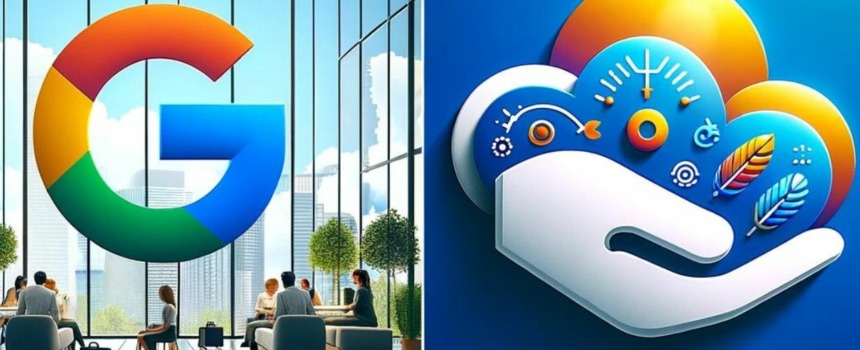In a world where employers and employment agencies are increasingly concerned about onboarding the right people with the right combination of skills, employer branding could make the difference between a good hire and a great hire. We look at some examples where employers have conveyed their culture to entice the best talent.
According to IT Salary Guide, the constant fluctuations in the IT industry require a tight hold of the job market and an understanding of not just what is required today, but what may be needed tomorrow. The age where a specialist was just that in one area are behind us; today, multiple skills are required. Finding someone with the skills that you needs, for example, a skilled manager with data analytics, or a computer scientist with project management skills and experience can be comparable to finding a needle in a haystack. Great branding can help to bring those needles to you.
Culture building
Before an organization can start considering how to sell their culture, they need to make sure that they have a culture that they want to sell. There is no point investing in broadcasting that you are a great place to work if your staff turnover and reputation tell a different story. Listen to what your employees say; an HR-led survey on aspirations, job satisfaction, organizational satisfaction and small changes can be incredibly enlightening. Not only will you be able to choose some quick wins from employees’ suggestions, but by showing that you are listening to them – and acting upon their needs – will go a long way in boosting moral and culture, not to mention productivity and attractiveness as an employer.
Creating the right content
Successful profile management makes it easy for prospective employees to see what is available within your organization as they gain insights into the many benefits of working with you. Choosing the right platform, and creating a consistent message are key; you want people to know that you value your team members, and you will invest in them to help them to achieve their potential. This is all dependent on the creation of the right content, used in the right place. Key content includes:
Social media – build a following of people who are interested in your sector or your organization specifically across a range of platforms, from LinkedIn to TikTok. This is a great opportunity to gain long-term exposure to current and future jobseekers.
Testimonials – we all know that customer testimonials work, but few organizations invest the same amount of time and energy into employee testimonials. Showcase your rising stars; express your pride in them and map out how your organization has supported them on their journey to demonstrate that you are an employer that will build their team capabilities, from the inside.
Videos – videos are a great way of accessing people on the go with quick bites of information. From day-in-a-life to employee/employer/customer interviews, videos coffer great insights into what makes your organization stand out.
Career sites – exposure to career sights will mean that your organization will keep cropping up as jobseekers search for opportunities. Even if they hadn’t heard of your organisation before, they will know who you are by the time they have spent a couple of hours searching for job prospects.
Examples of employee branding
Google – if you think of working at Google, you automatically think of that big yellow slide, great company perks and the opportunity to work at – gasp- Google. Few people think past the extensive perks and fun, innovative working environment. Google are so committed to employer branding that they had their own Hollywood Production- The Internship. What better way to sell yourself than by having millions of people view a film about you?
Salesforce – where Google might sell the fun side of the job, Salesforce’s brand focuses on the nurturing element. Referring to their staff as “Ohana” – Hawaiian for “family”, and alluding to the Disney quote “Ohana means family. And Family means no one gets left behind or forgotten”, Salesforce have nailed their culture, and are unsurprisingly considered one of the best places to work – in the world.
Oatly – the Swedish-based dairy alternative brand may not be up there with Google and Salesforce in terms of scale, but their consistent branding and active social media content, not to mention cleverly curated career page make them appealing to jobseekers and non-dairy product buyers alike. With sustainability and ethical practice at their core, jobseekers are likely to feel warm and fuzzy just considering a career with Oatly.
Microsoft – in a world where people expect to see white men at the top of the tree (and pay scale), every time, Microsoft stood up to support its female employees and work to close that gender pay gap. This activity is accompanied by an active fan page, by which jobseekers can see new opportunities, devour relevant content and apply for roles.
Innocent – UK-based smoothie brand took the world by storm with its core values of natural, entrepreneurial, responsible, commercial and generous. Standing by their “innocence” naturally encourages a feeling of trust from both jobseekers and customers. For jobseekers, the opportunity to be part of something that has strong cultural and ethical values can be an added bonus and (in some cases) one that an employee would be willing to sacrifice some financial benefits from. The community spirit is clear across Innocent’s branding and, like a micro-Google, they make Innocent HQ seem like a fun place to be.
Creating your own story
An organisation may not be able to organize a giant slide a la Google, or mass Ohana reunions, Salesforce style, but there are small things organizations can do that can not only help to attract jobseekers but will help to retain current employees by identifying their strengths and ambitions and supporting them to achieve them. By first identifying its core values, it is relatively easy for organizations to deploy the platforms mentioned earlier to build org culture, and showcase it to the world.











Comments